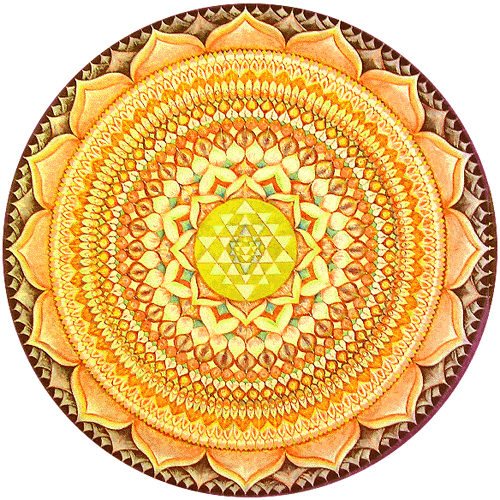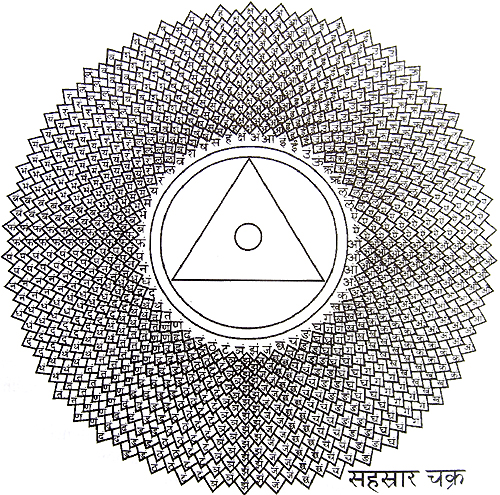
|
|
|
|
BY: SUN STAFF

Thousand-petaled Golden Lotus May 11, 2011 — CANADA (SUN) — A study of the historical, spiritual and cultural elements of Vedic design. The sacred Lotus (Latin, Nelumbo nucifera) is known by many names in Sanskrit. It is called kokanada rakta-kamala when reddish, pundarika when white, and pushkara or indivara if a rare blue lotus. There are many more Sanskrit terms describing the flower's parts, including the buds, petals, center fruit, leaves and stems, etc., and still more terms describing various configurations of the petals, e.g., padma. At the base of each mature petal, the coloration forms a square shape, which represents the earth element, Mother Bhumi. Rising from the center of the petals is the fruit, representative of the sacred Mount Meru, rising from the earth. Surrounding the Meru core are numerous filaments, which encircle the fruit cap. These represent the lesser mountains, which are rich in precious metals. The living entities populating Mother Bhumi are said to reside on the outer petals, with those who are pious on the top surface, and the demonic beings, rakshasas and nagas on the underside of the petals.
 Aside from the lotus stems held by Sri Krsna and Lord Visnu, or the padmasena lotus pedestals upon which the Supreme Personality of Godhead is situated, perhaps the most prominent sacred lotus design is that of Lord Brahma's thousand-petaled golden lotus, from which catur-mukha Brahma presides over the material creation after having himself been birthed by the lotus naval of Visnu. Like the inconceivable task of trying to depict the Sri Krsna's universal form, it would seem impossible to depict the thousand-petalled lotus, yet in Vedic scripture we find just that. The image below of the thousand-petalled lotus is often used to illustrate the crown (sahasrara) chakra, and it is often artistically rendered in the form of mandalas like the one at the top of this page.

The Sahasrara, or Thousand-petalled Lotus The lotus flower is associated with so many transcendental pastimes mentioned in sastra that it require writing a book to name them all. In the Samudra-manthana pastime – the churning of the milk ocean – fourteen precious jewels were revealed by the ocean in a red lotus. So many pastimes associated with Laksmi Devi also prominently feature the lotus, which she is either standing or seated upon, or bearing in one or both of her hands. Laksmi Devi herself is known as Padma and Kamala, both Sanskrit terms for the lotus.

Lord Surya holding Lotuses Lord Surya is also depicted at times with a lotus in each hand, because the open lotus is like the sun, the petals symbolic of the rays, and the lotus flowers open each day when the warmth of the sun hits their petals. In the temple carving above, Suryadeva's lotuses are very solar, the petal spread wide and flat, The nature of the lotus is best glorified in reference to the object of desire of all devotees: the lotus feet of the Lord, which are the abode of all purity and beauty – qualities the lotus is famously symbolic of.
| |